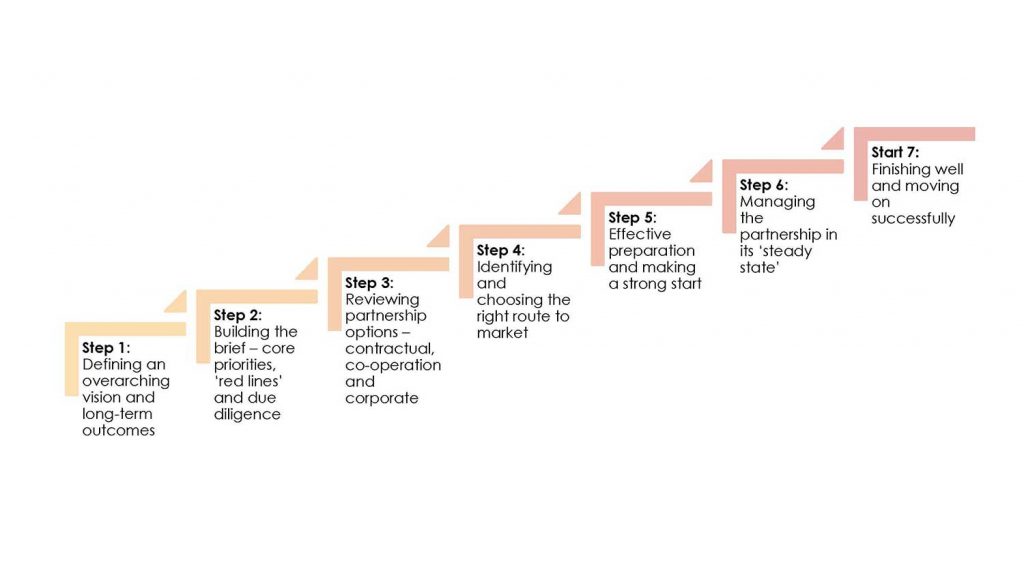Public-private partnerships can help councils deliver local investment.
There has never been a more pressing need for innovative thinking about the role public-private partnerships can play in supporting councils to deliver services and growth.
These partnerships integrate different resources, expertise and powers across the public and private sectors to finance, develop and operate projects and services in ways that cannot be achieved by either alone.
The LGA asked Partnering Regeneration Development Ltd and Newbridge Advisors to explore how councils, investors and developers are shaping public-private partnerships (PPPs) to respond to challenges around housing, fuel poverty, decarbonisation and supporting successful places.
Practical insights were gathered about different approaches, the benefits offered, and how councils can plan and deliver effective partnerships via seven key ‘steps’ (pictured below) across the project life-cycle.
Step one is about defining an overarching vision and long-term, market-facing outcomes. This should give clarity to a project and offer surety for the partner that upfront investment will result in outcomes, but ensure flexibility to respond to change.
Translating the vision into a ‘brief’ is the second step, and an important early activity to define and agree with stakeholders. This will pay dividends downstream by unearthing areas of divergence and key information gaps to be addressed.
Next, councils need to review their partnership options for achieving the desired outcomes. PPPs come in multiple forms – contractual, corporate, investment and collaborative. Time is needed to review the optimal structure for delivering the desired outcomes, and to test the market.
Step four is about identifying and choosing the right route to market. Selecting the right procurement or appointment route is key for all parties, and best value must be demonstrated regardless of route. Consider (with legal advice) whether procurement is needed at all – for example, for land and investment transactions.
Fifth, plan well to start well. Look to establish the first business plan and ‘early wins’ to build confidence in the partnership. Ensure the council has appropriately skilled people with time to invest in the partnership and to provide the ‘intelligent client function’.
Local Partnerships highlighted the importance of targeted training for council personnel, as managing PPPs can be complex and different from the day job.
Managing the partnership in its ‘steady state’ is step six. Uncertainty after the first flurry of projects may bring inertia and this period needs a distinct route map for delivery, including a business planning cycle, stakeholder engagement, monitoring of key performance indicators (KPIs), and regular lessons learned.
Enfield Council’s district heating company, Energetik, stressed the importance of setting clear KPIs with penalties, and consistently monitoring contractors’ performance to ensure standards are upheld.
Finally, the end will appear very distant at the outset, but will arrive, and needs planning for, according to step seven. The parties need to: communicate any preferred future involvement; make clear provisions for winding down the partnership; review the contract for issues or challenges; assess the need for Transfer of Undertakings Protection of Employment; and develop a continuity and communications plan to mitigate disruption to services.
From delivering a fair and inclusive economic recovery and addressing the climate crisis, to tackling the shortage of affordable housing and delivering successful high streets, PPPs are one of the many important tools available to councils to deliver investment and direct resources in ways that matter for their economies and communities.
